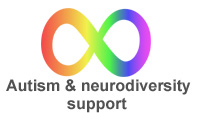How Does Therapy Work?: Neuroscience and the ‘Sixth Sense’
Therapy’s a bit of an enigma. It seems to work – but how? How can sitting in a room with someone and talking about things have such a deep impact?
Many psychotherapists think the answer lies in the relationship. That the therapeutic space between client and therapist can act as a kind of safe vessel to travel through the emotional turbulence that’s explored. That the therapeutic relationship is a chance to experiment with new behaviours in a safe framework. And that really being heard – really being seen – matters profoundly.
But that’s sometimes sounded a bit weak in the face of cold, hard science. And so, the more technique-based therapies like cognitive behavioural therapy (CBT) and even some online therapy modules have often seemed like the more ‘solid’ options simply because they’ve seemed easier to measure somehow.
Until now.
Gradually, it’s becoming possible to understand more about how important relationships can be to our healing process. How pivotal the other is to the self, and vice versa. And how other and self connect in relationship, in “moments of meeting.”
Some new research looks into this stuff a little more clinically. In a five-year study, where people’s brain activity was monitored during therapy sessions, it was found that a so-called “sixth sense” or physiological level enters the equation. An “alignment” of the therapists’ and clients’ autonomic systems take place, with “part of their nervous systems beating in harmony.”
Neuro-psychotherapist and researcher, Trisha Stratford, feels it’s this ‘alignment’ that really counts:
”It was very exciting. When we’re in this moment of oneness or an altered state, the most exciting thing is that a part of the brain called the parietal lobe is fired into action.
”When this happens we can read each other’s brains and bodies at a deeper level – a sixth sense.”
(Source: Sydney Morning Herald article 26/09/2010)
Perhaps this ‘sixth sense’ also reflects the research into mirror neurons and empathy and what that might mean for therapy, too?
Who knows?
But whatever the statistics and the science suggest, at some point they all melt away anyhow, and you’re back to just a room with a couple of people in it, talking…
And so it seems that that therapeutic relationship might just help facilitate inner healing after all; that these “moments of meeting” with someone else might also help you to meet with yourself; and that a profound connection to another might also connect you with your therapist within…
.
.
Image: composite image of diagram 1 and diagram 2
Article copyright Gabrielle Gawne-Kelnar, 2010



